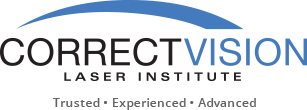Intraocular Lens Options
Cataracts develop when the natural lens of your eyes become cloudy, affecting your sight. When a cataract causes your quality of vision to interfere with your daily activities, cataract surgery is recommended.
After the cataract is removed, it is replaced with an intraocular lens implant that is similar to a small soft contact lens which contains an optical prescription that is matched for you, much like your glasses.
If you are diagnosed with cataract formation, Dr. Bosem in Hollywood wants you to know that there are different intraocular lens options available for you.
1. Monofocal lens:
These lenses are the most commonly implanted lenses today. They have equal
power in all regions of the lens and can provide high-quality distance vision.
Monofocal lenses are in sharpest focus at only one distance. They do not
correct pre-existing astigmatism, a result of irregular corneal shape that can
distort vision at all distances. People with significant astigmatism require
corrective lenses for sharpest vision at all distances. Patients who have had
monofocal intraocular lenses implanted usually require reading glasses.
2. Toric lens:
Toric lenses have more power in one specific axis in the lens to correct
astigmatism as well as distance vision. Due to the difference in lens power in
different areas, the correction of astigmatism with a toric lens requires that
the lens be positioned in a very specific configuration. While toric lenses can
improve distance vision and astigmatism, the patient still will require
corrective lenses for all near tasks, such as reading or writing.
3. Multifocal lens:
Multifocal intraocular lenses are one of the latest advancements in lens
technology. These lenses have a variety of regions with different power that allows
some individuals to see at a variety of distances, including distance,
intermediate, and near. While promising, multifocal lenses are not for
everyone. They can cause significantly more glare and loss of contrasts than
monofocal or toric lenses. Multifocal lenses cannot correct astigmatism, and
some patients still require spectacles or contact lenses for clearest vision.
Exploring Intraocular Lens Options
There’s no such thing as a “one size fits all” intraocular lens. Together, you and your doctor will discuss which lens or combination of lenses best fits your lifestyle and your vision goals. For more information on intraocular lens options, contact Correct Vision at 954-442-1133 or correctvision.com.


